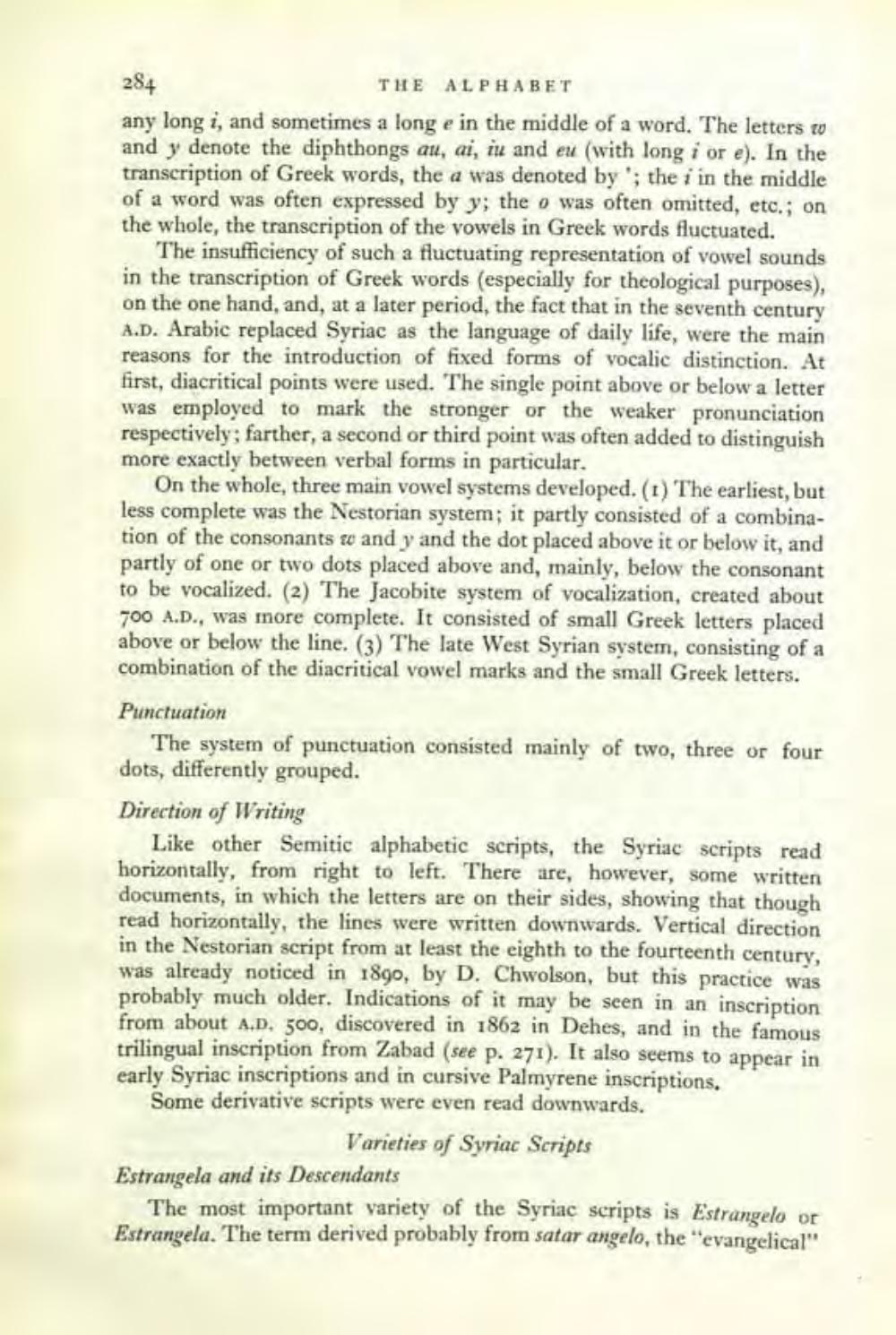________________
284
THE ALPHABET any long i, and sometimes a long e in the middle of a word. The letters w and y denote the diphthongs au, ai, iu and eu (with long i ore). In the transcription of Greek words, the a was denoted by '; the i in the middle of a word was often expressed by y; the o was often omitted, etc.; on the whole, the transcription of the vowels in Greek words fluctuated.
The insufficiency of such a fluctuating representation of vowel sounds in the transcription of Greek words (especially for theological purposes), on the one hand, and, at a later period, the fact that in the seventh century A.D. Arabic replaced Syriac as the language of daily life, were the main reasons for the introduction of fixed forms of vocalic distinction. At first, diacritical points were used. The single point above or below a letter was employed to mark the stronger or the weaker pronunciation respectively; farther, a second or third point was often added to distinguish more exactly between verbal forms in particular.
On the whole, three main vowel systems developed. (1) The earliest, but less complete was the Nestorian system; it partly consisted of a combination of the consonants x and y and the dot placed above it or below it, and partly of one or two dots placed above and, mainly, below the consonant to be vocalized. (2) The Jacobite system of vocalization, created about 700 A.D., was more complete. It consisted of small Greek letters placed above or below the line. (3) The late West Syrian system, consisting of a combination of the diacritical vowel marks and the small Greek letters.
Punctuation
The system of punctuation consisted mainly of two, three or four dots, differently grouped. Direction of Writing
Like other Semitic alphabetic scripts, the Syriac scripts read horizontally, from right to left. There are, however, some written documents, in which the letters are on their sides, showing that though
horizontally, the lines were written downwards. Vertical direction in the Nestorian script from at least the eighth to the fourteenth century, was already noticed in 1890, by D. Chwolson, but this practice was probably much older. Indications of it may be seen in an inscription from about A.D, 500, discovered in 1862 in Dehes, and in the famous trilingual inscription from Zabad (see p. 271). It also seems to appear in early Syriac inscriptions and in cursive Palmyrene inscriptions. Some derivative scripts were even read downwards.
Varieties of Syriac Scripts Estrangela and its Descendants
The most important variety of the Syriac scripts is Estrangelo or Estrangela. The term derived probably from satar angelo, the "evangelical"




